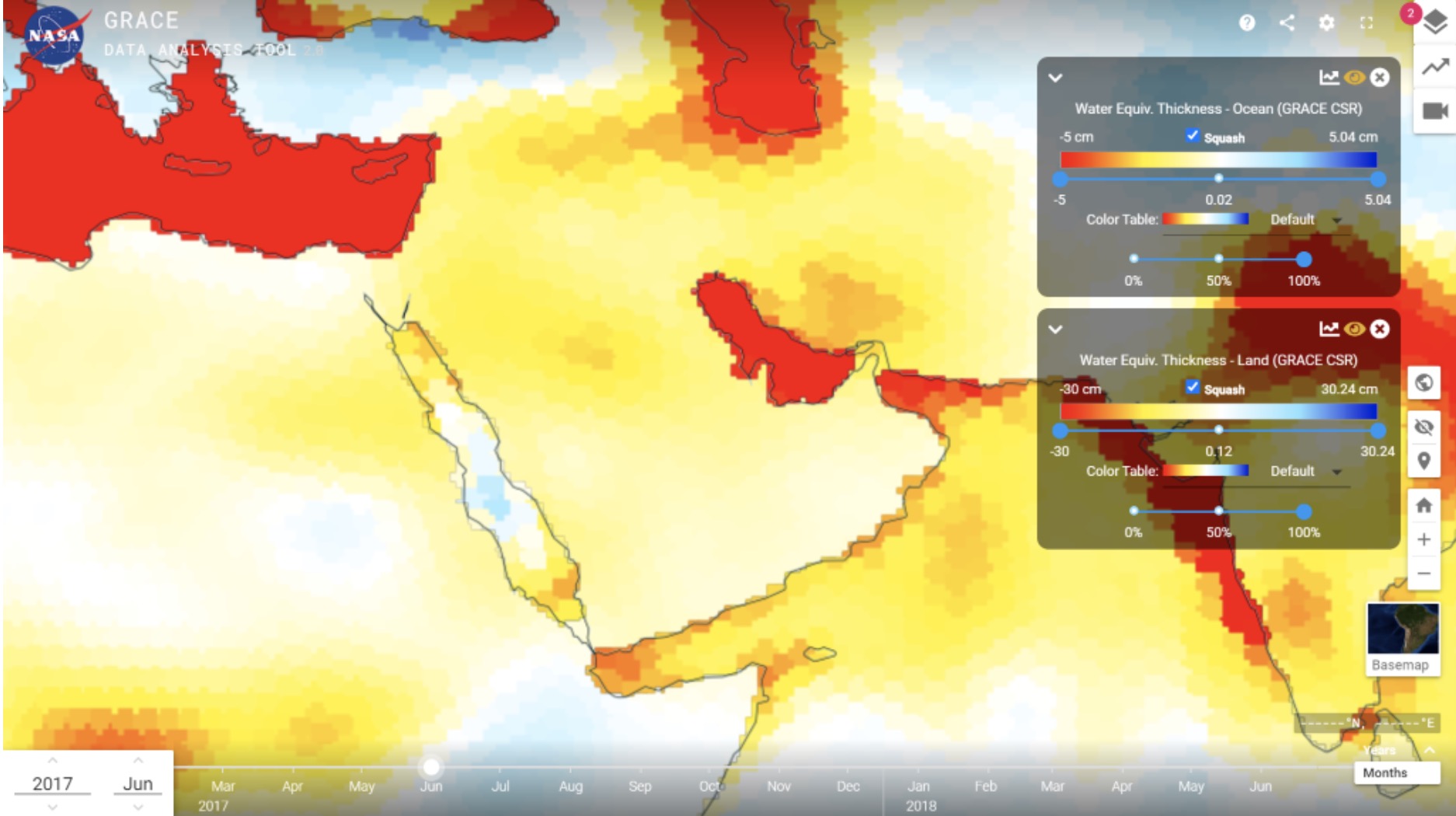Overall Water Resources
Water resources in Saudi Arabia are almost entirely comprised of groundwater supplies. The kingdom has virtually no permanent streams and relies on groundwater and desalination for water supply for household consumption, and to agriculture and other economic sectors. Saudi Arabia has significant water risk across most of the country, with overall water risk categorized as extremely high for most areas.
Surface Water
Due to infrequent low precipitation, along with high evapotranspiration, ephemeral streams or wadi, in Saudi Arabia, are dry most of the year outside of flood events. Runoff that does occurs either infiltrates to recharge the groundwater table or lost through evapotranspiration. Approximately 60 percent of the flow occurs on 10 percent of the land area while the remaining 40 percent of the runoff covers only 2 percent of the country land area.
Oasis
Oasis are declining in the desert from overexploitation of groundwater from agriculture. The Al Hassa Oasis, the largest oasis in the world, was once fed by 280 springs with an annual discharge of 315 MCM/year or at a constant rate ten m3/s. Since 1975, there was a dramatic increase in water demand to 712 MCM/year from industrial, agricultural, and municipal usage. Springs are running dry since groundwater drawdown reached 70-150 meters. Currently, water demand now relies on groundwater wells to be drilled, which may further deteriorate groundwater due to salinization.
Surface water is a renewable resource. Saudi Arabia is actively building and maintaining water infrastructures such as dams to capture the water. The collected water is used as a recharge to the local aquifer, flood control, irrigation, or water supply.
Streamflow monitoring stations are not publicly available from the GRDC website but have a competent system where additional stations are being added. As surface flow is highly erratic where the station may record water one every 3-4 years, the main challenge is the maintenance of the stations due to challenges in developing the rating curve that is continuously affected by erosion and sedimentation.
Ground Water
Groundwater is a critical water supply in Saudi Arabia, where it represents nearly all freshwater supply and underpins the agricultural and industrial sectors. The Mega Aquifer System, one of the largest aquifers in the world, sits beneath the Arabian Peninsula and the countries of Saudi Arabia, Oman, Yemen, Jordan, Iraq, and the United Arab Emirates. The aquifers that underlie the country have very slow recharge rates, due to limited surface precipitation. At the same time, population growth in Saudi Arabia has led to increases in water demand as well, and sustainable use of this resource is paramount to overall sustainable development in the country. Groundwater is used extensively for irrigation, and contributes to domestic and industrial water demand as well, though desalination is the primary source of drinking water as it is cost-prohibitive to meet agricultural demand.

NASA’s Gravity Recovery and Climate Experiment (GRACE) mission allows for groundwater changes to be measured using satellite data. One study used data from April 2002 to April 2016 to estimate groundwater depletion in Saudi Arabia, and found that groundwater storage had a depletion rate of − 2 ± 0.13 km3/year. The study found both fossil water (from the Saq aquifer), accumulated in the aquifer over long timer periods, and mixed waters (from the alluvial aquifer) across different well depths that were sampled.

Desalination
Desalination in the Kingdom of Saudi Arabia has been increasing and in the year 2018 it was 2137 million cubic meters from 30 desalination plants.
Reclaimed Waste Water
Reclaim wastewater has been increasing in Saudi Arabia especially in big cities. From the 2019 MEWA statistical yearbook, the volume of generated wastewater in 1,802MCM out of which of which 311.1 MCM of treated wastewater is used for landscaping purposes. As the Kingdom of Saudi Arabia is planning and in the processing of eco-cities, it is easier to incorporate the use of reclaimed wastewater in the planning process.
Water Quality
- Population growth and urbanization
- Climate – one of the driest countries
- Political Instability
- Unsustainable water use, undervalued water
- Red Sea Project – huge tourism project, will require significant water supply